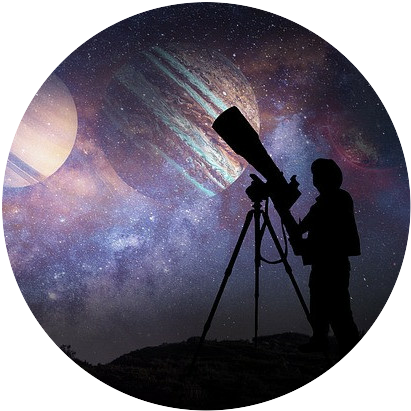Astronomy 101: Astronomy Basics
 Ever since I was a child, astronomy amazed me. I remember watching “From Here to Infinity: The Ultimate Voyage” starring Patrick Stewart and many other documentaries as I grew older. In space there is much to explore and it can be seen through a telescope.
Ever since I was a child, astronomy amazed me. I remember watching “From Here to Infinity: The Ultimate Voyage” starring Patrick Stewart and many other documentaries as I grew older. In space there is much to explore and it can be seen through a telescope.
Becoming an Amateur Astronomer is an amazing journey to embark on. Similar to Hubble and the vast array of things it has captured, you will begin to realize as you research that you can see much more in space than you initially may have thought! Through a telescope, you can see over 40,000 different space objects! That shocked me as I was recently doing research on different computerized telescopes. What you can see though varies depending on the focal length and aperture of the telescope.
Besides just being able to see distant objects, I learned that some space objects are bigger than the moon in the sky, however they are dim. If astrophotography is something you plan to pursue, taking long exposure imagery will allow you to capture images very similar to Hubble. You may not be able to capture the deep field with a home telescope, but you can capture Galaxies in the local group such as Amdramada, Messier 65, and even things such as Globular Clusters and Nebula within our own Galaxy!
This article is a gateway to more detailed articles that I plan to write. As you Read each section, I will eventually interlink each segment with longer articles on that topic. (Posy to be edited later to add more detail and links.)
What is a Telescope?
Telescopes are at the most basic level, a light gathering device. Similar to the large lenses on cameras, a telescope primary goal is to gather light above being a magnification device. Look at the eye, the eye functions very similar to how a telescope works. It gathers light, and as a result you see the world around you. If eyes can’t gather light, you cannot see.
What are the Different Kinds of Telescopes?
When it comes to buying a telescope, there is a wide variety to choose from. There are, Refractor Telescopes, Reflector Telescopes, and Catadioptric Telescopes(a).
What Are Telescope Mounts?
Telescopes alone are not the only thing to look for when buying a telescope, thing to consider is that there are different kinds of mounts to choose from. The different kinds of telescope mounts as schmidt-cassegrain mounts, go-to mounts,
What is Aperture?
Aperture is the amount of light a telescope can gather at once. The higher the aperture, the more expensive the telescope. However, the higher the aperture, the more detail you will see when looking at a space object too. So the extra price is worth it. Since I plan to get into astrophotography, getting a higher aperture telescope is my goal.
What is Focal Length?
Focal Length, is how long the optical tube of your telescope is. The focal length also affects how easy it is to find space objects.
What is Viewing Astronomy?
Viewing Astronomy is simply a form of astronomy where you use a telescope and look at space objects directly through it. Viewing Astronomy is the oldest form of astronomy. When telescope astronomy was new, astronomers of old used their telescopes to study the stars. Back then, astronomers didn’t understand everything that they saw yet, but Messier was one of the first to see Galaxies. He thought that they were just nebula, but later they were discovered to be Islands of stars, many of which are named after Messier in honor of his discovery.
What is Astrophotography?
Astrophotography is the branch of astronomy that takes images of space objects. Unlike viewing astronomy, astrophotography is a much newer form of astronomy. Two famous examples of astrophotography telescopes are the Hibble Space Telescope and The James Webb Space Telescope. Being space telescopes, they have the largest apertures and without the interference of Earth’s atmosphere can take stunning pictures of the cosmos!
What Space Objects Can I see?
Gazing into the night sky, there are over 40 thousand objects that you can see. How much you can see though is based on the focal length and aperture.
Astronomy is Science, not Astrology
The science of astronomy is not to be confused with astrology. Astrology is an ancient practice where people would predict the future using the stars. Today, people use horoscopes using their star signs to predict their personalities and who they are compatible with. That’s all nonsense though.
In astronomy, the placement of the stars and the constellations can’t predict the future, or make you think and act a certain way. Astronomy is simply the study of the cosmos in a scientific manner. Astronomers
Begin Your Journey into Outer Space!
Citation(s)
(A): (n.d.). The Basic Types of Telescopes. OPT Corp. https://optcorp.com/blogs/telescopes-101/the-basic-telescope-types
Leave a Reply